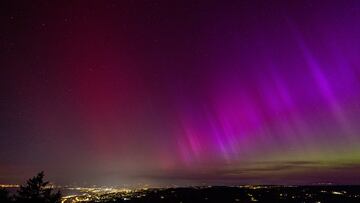SCIENCE
When were other solar storms that have affected the earth and what happened?
This weekend’s solar storm promises to be the strongest in over two decades though history is littered with their disruptive power.

Solar storms, also known as geomagnetic storms, are disturbances in Earth’s magnetosphere caused by the interaction between the solar wind and the Earth’s magnetic field. The Earth is expected to be hit by these conditions this weekend. At a G5 (extreme) condition, the first since 2003, it has the potential to have an impact on various technologies and systems. This can include power outages and disrupted communications.
Aside from disruption, the flares are also the producer of the Northern Lights, the aurora borealis.
Solar storms throughout history
The first recorded solar flare was spotted in 1859. Coincidentally, it is still the most powerful solar storm on record, with auroras seen all over the planet and telegraph communications bursting into flames. Here is a selection of others:
.November 1882: A geomagnetic storm caused auroral displays and affected telegraph systems in the US and UK, leading to a switchboard fire in Chicago.
October 1903: A significant solar storm during a solar minimum period disrupted communications, causing voltage spikes in telephone lines in Chicago that could “kill a man” and affecting telegraph systems in London.
May 1921: An intense geomagnetic storm, known as the New York Railroad Storm, caused widespread auroras, fires, and severe disruptions to telegraph services in North America and Europe.
January 1938: A massive solar storm lasting 10 days produced auroras across North and Central America, the Caribbean, and Europe, leading to interruptions in transatlantic and North American radio communications.
August 1972: A solar storm caused widespread disturbances to electrical and communications grids in North America, disrupted satellites, and even caused the accidental detonation of US naval mines near North Vietnam.
March 1989: A geomagnetic storm resulted in communications blackouts, a major power outage in Quebec, Canada, and the loss of positional knowledge for over 1,000 space objects for nearly a week.
October 1989: A series of large radiation storms occurred within one week, forcing astronauts on the International Space Station to shelter in the furthest interior to shield themselves.
July 2000: The Bastille Day Flare caused damage to power systems.
Halloween 2003: A series of solar storms caused problems for deep space and near-Earth space missions, rerouting operators and affecting satellite systems and power grids. As mentioned, this was the last G5 strength storm.






